Water Efficiency Watch - September 2020
In this issue of Water Efficiency Watch:
- Trump Administration Proposes to Roll Back Showerhead and Clothes Washer Efficiency
- Tribute to A Water Conservation Warrior
- Introduction to Conservation Planning Course with Amy Vickers
- G480 Update
- Chronic Underinvestment in America’s Water Infrastructure Puts the Economy at Risk
- Interview with SCV’s Matt Dickens
- “Sustainable Waters” Maps Water Shortages
- Census Data Helps Conservation Planning
- News briefs and member updates
Trump Administration Proposes to Roll Back Showerhead and Clothes Washer Efficiency
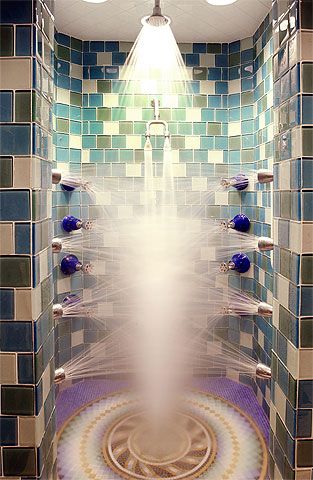 The U.S. Department of Energy (DOE) has announced two different rulemakings: 1) to change the definition of showerheads to allow multiple showerhead flow; and 2) to create a new product class of clothes washers without any water and energy efficiency standards. These proposed rulemakings follow up on President Trump's repeated public pledges to revert to decades-old high flow standards.
The U.S. Department of Energy (DOE) has announced two different rulemakings: 1) to change the definition of showerheads to allow multiple showerhead flow; and 2) to create a new product class of clothes washers without any water and energy efficiency standards. These proposed rulemakings follow up on President Trump's repeated public pledges to revert to decades-old high flow standards.
Under DOE’s proposed definition for showerheads, each showerhead of a multiple showerhead product would separately be required to meet the 2.5 gpm standard established in federal law; currently, DOE regulations state that 2.5 gpm is the maximum flow for the entire shower and this would be reversed. DOE also proposes to remove the terms "body spray" and "safety shower showerhead" from the definition of showerhead altogether. This would mean that these products would not be considered showerheads subject to DOE’s test procedures, and energy and water conservation standards. As a result, multiple showerheads will be routinely allowed in shower stalls, and body sprays will have no legal flow requirements whatsoever and can occur in unlimited combinations.
Regarding clothes washers, DOE proposes to establish separate product classes for top-loading residential clothes washers and consumer clothes dryers that offer cycle times for a normal cycle of less than 30 minutes, and for front-loading residential clothes washers that offer cycle times for a normal cycle of less than 45 minutes. DOE would consider appropriate energy and water efficiency standards for such product classes in separate and future rulemakings -- meaning that these new product classes, once approved, would have no water and energy efficiency standards whatsoever for an indeterminate period of time.
Click here to learn more about these troubling developments and to sign on to AWE’s two comment letters. Written comments may be submitted until September 30 at regulations.gov![]() .
.
Tribute to A Water Conservation Warrior
 AWE mourns the passing of a major force in water conservation: Warren C. Liebold, the retired Director of Metering and Conservation at the New York City Department of Environmental Protection. Warren passed away suddenly on August 10th, 2020.
AWE mourns the passing of a major force in water conservation: Warren C. Liebold, the retired Director of Metering and Conservation at the New York City Department of Environmental Protection. Warren passed away suddenly on August 10th, 2020.
Warren began his career with the New York City Environmental Protection, Bureau of Customer Services on April 27, 1992 as the Director of Conservation. He designed and managed New York City’s Toilet Retrofit Program, to this day the largest toilet direct install retrofit program of any single city in North America. The $15 million contract included oversight of more than 200 plumbing contractors for direct installation of ULFT’s. In 1997, Warren became the Director of Technical Services/Metering, where he led programs for Large Meter Replacement, Automated Meter Reading, and Meter Requirement Contracts. He also served as Coordinator of a DEP Task Force revising the City’s technical regulations on water use.
In addition to being a member of numerous boards and committees, Warren published countless articles and gave many presentations to share his knowledge. His legacy of excellence, professionalism, and humility will be greatly missed by the water conservation community.
Introduction to Conservation Planning Course with Amy Vickers
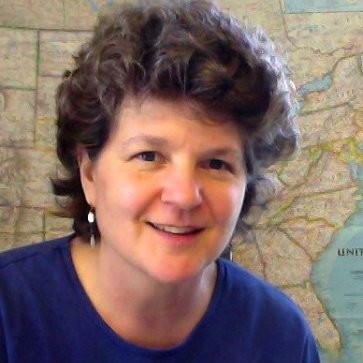 AWE is hosting a series of courses on water efficiency and conservation with the legendary Amy Vickers! The first introductory course on Water Conservation Planning will be split into two sessions to be held on September 9 and September 17, both at 1 p.m. CDT. Amy will incorporate the basic steps from her widely referenced Handbook of Water Use and Conservation and other planning sources (limited copies of The Handbook are available for $55 + $9.95 S&H).
AWE is hosting a series of courses on water efficiency and conservation with the legendary Amy Vickers! The first introductory course on Water Conservation Planning will be split into two sessions to be held on September 9 and September 17, both at 1 p.m. CDT. Amy will incorporate the basic steps from her widely referenced Handbook of Water Use and Conservation and other planning sources (limited copies of The Handbook are available for $55 + $9.95 S&H).
The course includes:
- common conservation and efficiency definitions and concepts and units of water measurement;
- long-term conservation strategies compared to short-term drought response;
- impacts of conservation on future water demands and water and wastewater capital facility planning and costs;
- contrasts between water supply-side and demand-side economics, policies, and planning approaches;
- why and how to establish water saving goals for conservation plans;
- water use data analytics and how to evaluate common customer demand characteristics and per capita metrics;
- connections between water demands and water quality, population, environment, health, and climate; and
- features of successful conservation programs.
If you are unable to attend the live broadcast, the course will be recorded and made available for later viewing. After the course, attendees will also have an opportunity to post in a discussion forum and ask Amy questions. Learn more and register here.
G480 Update
The AWWA G480-13 Water Conservation Program Operation and Management Standard is being updated. While the exact timing of publication is unknown, AWE is suspending its G480 compliance verification service until the new standard is released. AWE will update its process and requirements for submission and may create a new leaderboard. This will likely occur in the first quarter of 2021. The existing leaderboard will be preserved on the AWE website.
Chronic Underinvestment in America’s Water Infrastructure Puts the Economy at Risk
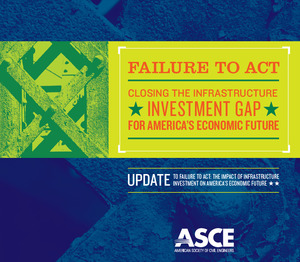 The United States is underinvesting in its drinking water and wastewater systems—putting American households and the economy at risk, according to a new report released today by the American Society of Civil Engineers (ASCE) and Value of Water Campaign. The report, The report, The Economic Benefits of Investing in Water Infrastructure: How a Failure to Act Would Affect the U.S. Economy Recovery, finds that as water infrastructure deteriorates and service disruptions increase, annual costs to American households due to water and wastewater failures will be seven times higher in 20 years than they are today — from $2 billion in 2019 to $14 billion by 2039.
The United States is underinvesting in its drinking water and wastewater systems—putting American households and the economy at risk, according to a new report released today by the American Society of Civil Engineers (ASCE) and Value of Water Campaign. The report, The report, The Economic Benefits of Investing in Water Infrastructure: How a Failure to Act Would Affect the U.S. Economy Recovery, finds that as water infrastructure deteriorates and service disruptions increase, annual costs to American households due to water and wastewater failures will be seven times higher in 20 years than they are today — from $2 billion in 2019 to $14 billion by 2039.
America’s water infrastructure is aging, with many drinking water systems and wastewater treatment facilities nearing the end of their respective design lives (75-100 years), causing contamination and economic disruptions to communities. Between 2012 and 2018, the rate of water main breaks in the U.S. rose by 27 percent to roughly 300,000 breaks per year — equivalent to a break more than every two minutes. The U.S. lost an estimated $21.7 million of treated water in 2019 due to leaks, which is projected to reach $48 million by 2039 with current investment trends. In addition to the impact on households, American businesses most reliant on water will spend $250 billion in 2039 on water service disruptions.
In 2019, water service disruptions resulted in $51 billion in economic losses for 11 water-reliant industries such as education, health services, retail, construction, manufacturing, and more. With the current trajectory, service disruptions will cost water-reliant businesses an estimated $116 billion by 2029 and will soar to $264 billion by 2039. With damage and flooding from increasing storms, in addition to water shutoffs and deteriorating infrastructure, production costs for businesses and prices for consumers are expected to climb. The report finds that more than $625 billion in business sales (gross output) would be lost over the next 10 years. By 2039, that number will near $3.9 trillion. Failing to invest would cause reductions in wages and disposable income; by 2039, 636,000 jobs would be lost annually.
The report also notes that the future does not have to look this bleak. If investment is increased to address these shortfalls now, the US GDP would grow by $4.5 trillion in 20 years. This investment would create 800,000 new jobs and household disposable income would rise by more than $2,000 per household.
A research team comprised of EBP, Downstream Strategies, and the Interindustry Forecasting Project at the University of Maryland (INFORUM) worked with ASCE and the Value of Water Campaign to develop this analysis.
Click here![]() for more information on ASCE’s Failure to Act series and to read the full report.
for more information on ASCE’s Failure to Act series and to read the full report.
Interview with SCV’s Matt Dickens
 Matthew Scott Dickens is the Resource and Conservation Manager at Santa Clarita Valley Water Agency
Matthew Scott Dickens is the Resource and Conservation Manager at Santa Clarita Valley Water Agency![]() , Chair of the California Water Efficiency Partnership’s Research and Evaluation Committee
, Chair of the California Water Efficiency Partnership’s Research and Evaluation Committee![]() , and Vice-Chair of AWE’s Research Committee.
, and Vice-Chair of AWE’s Research Committee.
How long have you worked in water and what brought you here?
My first water conservation job was in 1999, serving as a consultant to the City of Albuquerque. I promoted the city’s residential water audit and retrofit program at special events. It was a great college job: I learned about conservation, became familiar with the city’s programs, and had dynamic conversations throughout the community. Marketing proved successful, the contractor was inundated with work and needed to hire additional auditors. I started performing residential audits and within five years I ran the program and started developing new services. As a consultant to the city, I also provided services for the Cities of Santa Fe, Durango, Tucson, and other cities across the Southwest for an outfit called Smart Use.
With a Bachelor of Arts in Political Science from the University of New Mexico and ten years’ experience in water conservation, I moved up to Los Alamos, New Mexico where I served as the Water and Energy Conservation Officer for the Department of Public Utilities. Los Alamos County owns all the utilities and manages them at a single facility—wastewater, natural gas, electricity, and water. Given the droughts in California, I decided to move to Valencia, California in 2010. Valencia merged with other agencies in Santa Clarita Valley to become Santa Clarita Valley Water Agency (SCV Water), and I was asked to lead the Valley’s entire program. As a life-long learner, I went back to school and earned a Master of Public Administration from the University of Southern California.
Are there a lot of differences between working at an investor-owned utility versus a public utility?
There are the obvious regulatory differences and procedures but the goal, from my perspective, is the same across all agencies: provide high-quality drinking water reliably and affordably. From a water conservation and efficiency standpoint, all the agencies are committed to meeting state and regional mandates, providing excellent customer service, and being effective and efficient with resources. For SCV Water, this mission has expanded to include building community partnerships and leading collaborative projects to improve our effectiveness and efficiency.
What do you consider the biggest successes in your career so far?
There are many exciting and innovative projects that I’ve been a part of—when I was in Los Alamos, we worked with the county, the state of New Mexico, the Los Alamos National Laboratories, Sandia National Laboratories and the federal government of Japan to build a smart grid demonstration project for green energy, smart meters, and home water and energy management systems.
Back when I was a consultant to the City of Albuquerque, we launched one of the first social norming, parcel-driven water conservation tools for customers, using aerial imaging to measure landscapes, look at their water consumption, and give them water budgets for irrigation. The reports ranked customers from most inefficient to least, identified how much water could be saved, what areas needed the most improvement, and what technologies provided the best outcomes.
When I was in Los Alamos, I heard about the projects that were happening here in Santa Clarita Valley. One project, the Water SMART Allocation Program![]() , aimed to measure every parcel in the service area and provide customers with customized monthly water efficiency targets. The program was highly innovative and data driven, and I considered it a great opportunity to learn more, communicate more, and provide customized conservation on a mass scale.
, aimed to measure every parcel in the service area and provide customers with customized monthly water efficiency targets. The program was highly innovative and data driven, and I considered it a great opportunity to learn more, communicate more, and provide customized conservation on a mass scale.
What emerging trends or issues in the field of water interest you?
Data-driven decision-making coupled with human-centric system design is where our industry is heading, particularly as we develop more data capacity with the Internet of Things, big data, and smart metering. Access to information provides tremendous potential: monitoring, automating, and predicting algorithms will give us the ability to proactively communicate, assist customers with specific concerns, forecast trends, and predict problems. Data-driven decisions will increase efficiency and effectiveness exponentially. Something that we have scratched the surface of at SCV Water is using parcel-level water consumption data to target customers and to engage with them in a meaningful way. That’s where predictive analytics become valuable: you can identify a customer’s water consumption trends and measure them against actual water need. You can identify, for example, that a customer has a smart controller but that it’s calibrated incorrectly, or that its distribution uniformity is off. The key is for implementation to be human-centric. How do you take data and communicate them to customers in a meaningful and constructive way? Consumers want the lowest bills possible, but they also want the highest utility of their water service. “Cheap” and “great service” don’t often go hand in hand, but water efficiency bridges that gap. So that’s where I see our industry going: better predictive analytics, better targeting and direct outreach, and better messaging and communication with consumers.
What’s your favorite thing to do when you’re not at work?
I think I finally recovered from getting my master’s degree—that was quite a heavy lift. I enjoy spending time with my family, cooking French food, and writing/playing/producing music. I used to be in a few indie bands that released full-length records and toured the country. I also play with some other water conservation professionals in Southern California—you can see us play some CalWEP events.
What’s your number one piece of advice for other water professionals?
While we are all capable of conducting, analyzing, and developing good and valid research, being active and collaborative are essential. Having professional organizations like AWE, CalWEP, and AWWA serving as clearinghouses for research brings people together to share smart practices. My best recommendation is to network: get involved early and often, find your voice, and participate.
WSI Virtual Sessions
 The annual WaterSmart Innovations (WSI) conference has gone virtual for 2020. Every Wednesday from September 23-October 28, WSI will hold free, 90-minute webinars on a variety of topics including Marketing, Education, Landscaping, Conservation, and Water Loss.
The annual WaterSmart Innovations (WSI) conference has gone virtual for 2020. Every Wednesday from September 23-October 28, WSI will hold free, 90-minute webinars on a variety of topics including Marketing, Education, Landscaping, Conservation, and Water Loss.
On September 23, tune in to hear the AWE Study Team of Lisa Maddaus and Anil Bamezai present the findings of AWE’s report, Use And Effectiveness of Municipal Drought Restrictions. Then, join AWE’s Mary Ann Dickinson and Bill Christiansen on September 30 for a presentation titled, “Breaking New Ground in 2020: AWE Launches Five Water Efficiency Initiatives,” to learn about AWE’s latest accomplishments and work products.
Participation is limited to 500 people per webinar, so sign up ASAP! Click here![]() to learn more and to register.
to learn more and to register.
35th WateReuse Symposium
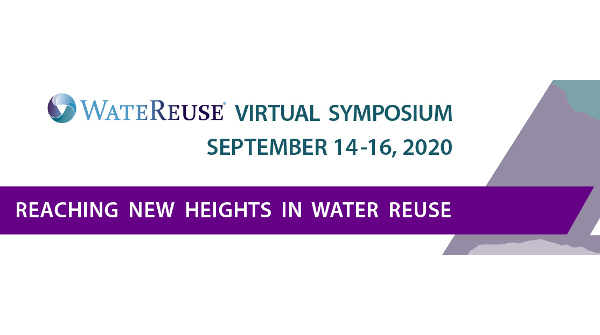 The 2020 WateReuse Symposium will launch online September 14-16 using virtual event software to offer attendees, sponsors, exhibitors, and presenters an experience very close to the experience of a live event. Participate in the Symposium from any location and at your convenience—view presentations and chat with co-attendees, including sponsors and exhibitors.
The 2020 WateReuse Symposium will launch online September 14-16 using virtual event software to offer attendees, sponsors, exhibitors, and presenters an experience very close to the experience of a live event. Participate in the Symposium from any location and at your convenience—view presentations and chat with co-attendees, including sponsors and exhibitors.
This year’s Symposium theme, Reaching New Heights in Water Reuse, will showcase the dramatic expansion of water recycling throughout the United States as it becomes a sought-after solution for a range of water management challenges. AWE is proud to be a promotional partner for this exciting event. Learn more and register here![]() .
.
“Sustainable Waters” Maps Water Shortages
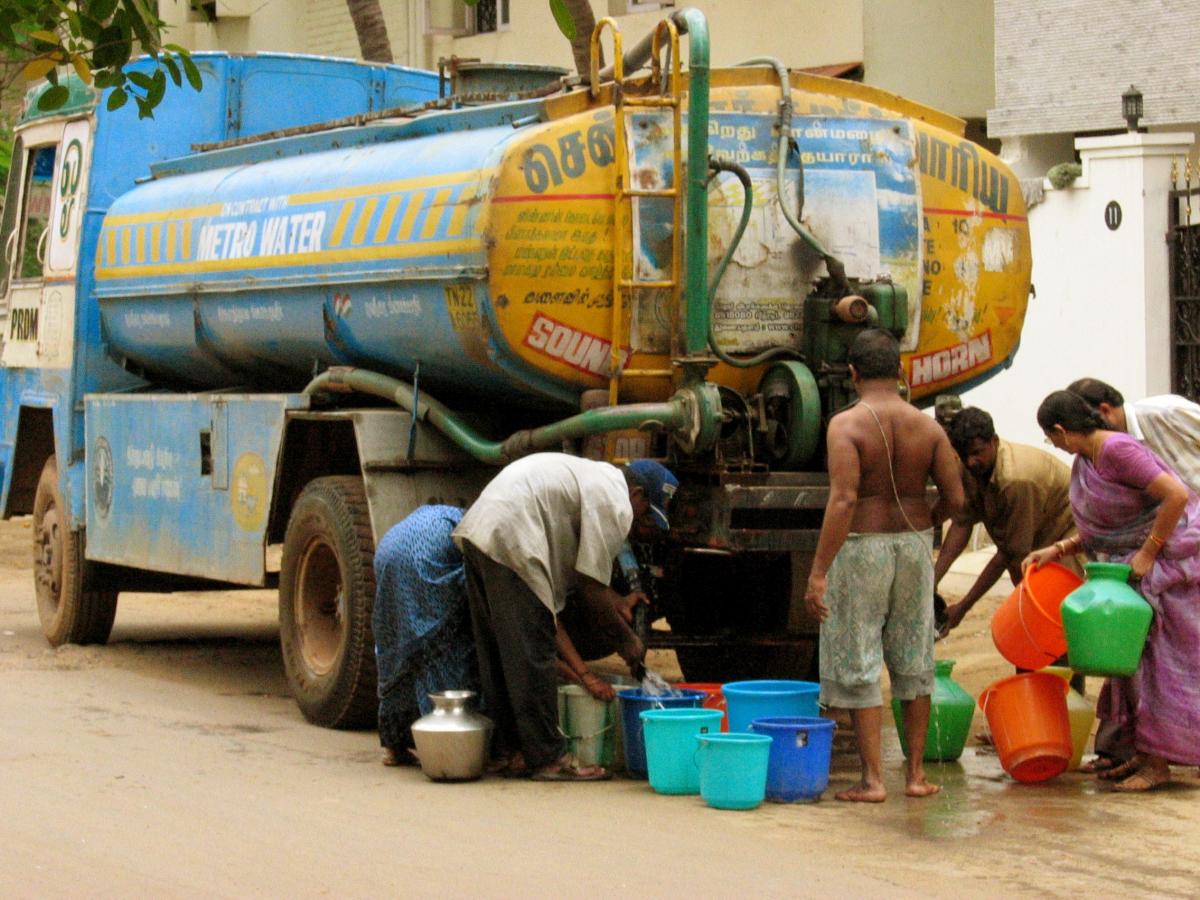 Near the end of the Spring semester at the University of Virginia—after all teaching had moved online—Brian Richter of Sustainable Waters began checking in regularly with his students to see how they were holding up under the pandemic and stay-at-home orders. Most of them had moved back into their parents’ houses for the time being, and many were clearly disappointed to have lost exciting internships, or had cancelled travel plans for the summer.
Near the end of the Spring semester at the University of Virginia—after all teaching had moved online—Brian Richter of Sustainable Waters began checking in regularly with his students to see how they were holding up under the pandemic and stay-at-home orders. Most of them had moved back into their parents’ houses for the time being, and many were clearly disappointed to have lost exciting internships, or had cancelled travel plans for the summer.
Eager to help but without any big grants that he could use to hire them, Richter suggested that if they were getting bored and wanted something productive to do, he could use help in further building a map database of water shortages for the Sustainable Waters website. Several students volunteered.
Their energetic efforts have been most impressive. Each week, they have been adding more than 40 new cases of well-documented water shortage events from around the world. These water shortages have impacted urban water supplies, public health, energy production, agriculture, industrial and manufacturing operations, and the environment. Here are some of the most interesting cases they’ve found:
- Indonesia, 1970s-present: Excessive groundwater pumping and usage has led to massive land subsidence. The land has sunken 4 meters since the 1970s. The city of Jakarta is experiencing flooding and is at risk of sinking into the ocean, so officials are considering moving it back onto higher and safer ground.
- Morocco, 2017: Morocco is one of the world’s top exporters of watermelons, which are very water-intensive to grow, especially in large quantities. Large watermelon farms depleted groundwater aquifers and therefore drinking water supply to many rural areas. In 2017 alone, there were 11,000 documented water protests, half of which were in poverty-stricken and suffering rural areas, such as the town of Zagora.
- Ireland, 2018: The 2018 summer drought left Irish crop fields dry enough to reveal the presence of an ancient henge. There was not enough water to properly hydrate the crop fields. As such, the position of where the henge used to be became visible when the crops died.
- Germany, 2018: In 2018, about 90% of Germany was in drought-like conditions. For nearly 4 months, ships were not able to pass through the Elbe River because the river depth was only about 50 cm. Due to the low water level a 108,00-square foot silt bar emerged and old WWII bombs resurfaced.
- Nepal, 2020: Years of rampant state mismanagement and booming in-migration from the countryside, particularly during the Maoist insurgency, have massively overextended [the water] pipeline network in Nepal’s capital city of Kathmandu. Residents scramble to obtain water from privatized water tanker companies that overcharge for poor-quality water, threatening impoverished communities who have the most limited access to safe water.
View the full collection of cases here![]() .
.
Census Data Helps Conservation Planning
Did you know that the data from the Census helps fund water conservation programs like the Emergency Watershed Protection Program? The deadline to be counted for the U.S. Census is fast approaching. Join the Alliance for Water Efficiency to take 10 minutes on the 10th of September to make sure all of our employees are counted![]() . Are all your employees counted? Tell us in your social media and tag us in it!
. Are all your employees counted? Tell us in your social media and tag us in it!
News and Member Updates
- Las Cruces Utilities works with students to prepare them for careers in water efficiency. Learn more here
 .
. - Making sustainability a priority: How AWE Board member Ron Voglewede helps Whirlpool stay green around the globe. Learn more here
 .
. - AWE partner North Texas Municipal Water District Provides insights on Water Conservation. Learn more here
 .
. - WaterWise Garden Recognition Contest winner announced. Learn more here
 .
.





